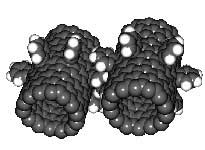According to scientists’ estimates, starting from 2006, products from nanotechnology (ultra-small technology) are expected to be worth more than $1 trillion. These could include tennis balls made from nanofibers, cosmetics, robotic explorers of human cells, carbon fibers stronger than steel by 100-160 times, ultra-hard and ultra-small disks that can fit inside an eggshell…
 |
|
Nano tubes as small as a hair will emerge in 2006 |
In 1959, Professor Richard Feynman of the Massachusetts Institute of Technology (MIT) proposed a bold theory: “Instead of dividing matter, why not explore the infinitely small?”. Ten years later, student Eric Drexler coined the term nanotechnology. In 1985, two researchers, Gerd Binnig (Germany) and Heinrich Rohrer (Switzerland), created a microscope capable of viewing objects just 1/25 the size of a molecule, and they won the Nobel Prize a year later. However, it wasn’t until 1990 that IBM researcher Don Eigler achieved significant successes in nanotechnology, notably by recreating the logos of several companies using ultra-small materials and techniques.
Many applications from this new technology include ultra-small and ultra-durable polymer molecules used to manufacture snowboards, making them easier to ride. The clothing of athletes and explorers is also woven from ultra-tight and ultra-thin nanofibers, providing excellent protection against the harsh cold of polar regions or Mount Everest. Nano oils or creams will help skin effectively resist ultraviolet rays.
Mitsubishi has invested over 100 million euros in nanotechnology by 2007 to create small carbon fibers that are 100 times stronger than steel and up to 6 times lighter. Asiaweek magazine notes that the nano market has not yet exploded in Asia, but China does not want to fall behind Japan and India, investing tens of billions of dollars in establishing a nanotechnology laboratory in Shanghai.
The nano market is likely to develop more in electronics and medicine than in consumer products. However, a new field is emerging: the establishment of companies specializing in nanotechnology, rather than just being a division of a university or another company. Just in the past year, more than 3 billion euros have been spent on top-tier nano researchers. Americans hope that nanotechnology will have extensive applications in healthcare, education, energy, transportation, and even the judiciary. Even NASA is considering ways to reduce the amount of luggage for astronauts, as each person currently has to carry up to 150kg of luggage per flight.
Ngoc Phuc


















































